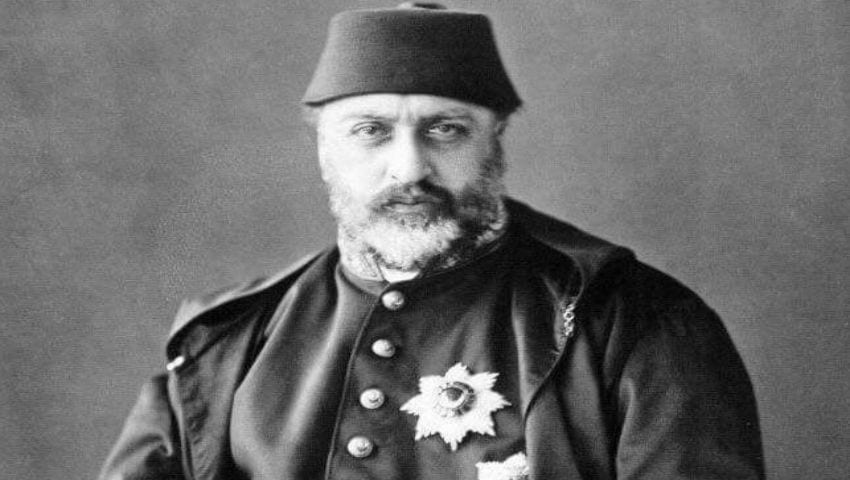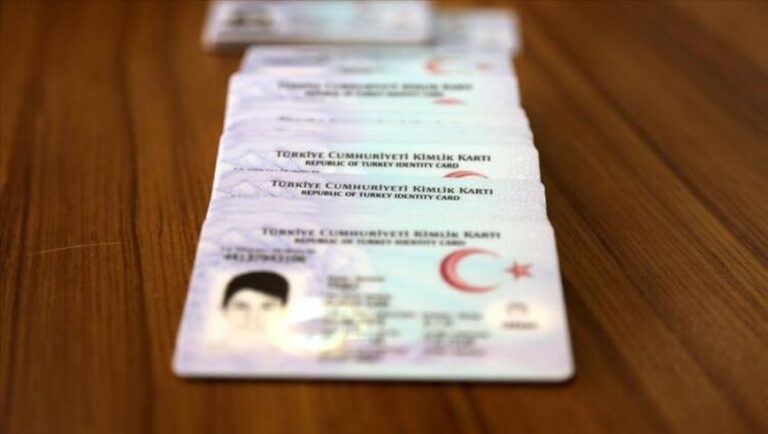Table of Contents
Sultan Abdulaziz is considered one of the most important sultans of the late Ottoman Empire, as he was the first Sultan to travel on a diplomatic visit to Europe and Egypt.
The life of Sultan Abdul Aziz I ended tragically after he was found murdered in the Ciragan Palace, which sparked widespread controversy that continued until the reign of Sultan Abdul Hamid II.

The lineage and family of Sultan Abdulaziz
Sultan Abdul Aziz I belongs to the Ottoman family, as his full name until Ertugrul Gazi is:
Sultan Abdul Aziz I son of Mahmoud II son of Abd al-Hamid I son of Ahmed III son of Muhammad IV son of Ibrahim I son of Ahmed I son of Muhammad III son of Murad III son of Salim II son of Suleiman the Magnificent son of Selim I bin Bayazid II son of Muhammad Al-Fatih son of Murad II son of Muhammad I son of Bayazid I son of Murad I son of Orhan Gazi son of Osman son of Erturgul Gazi
Sultan Sultan Abdul Aziz had six marriages, and they were:
- Doronev Qadin and father of three children
- Ideal Qadin did not give birth to only one child
- Sultana Hayrana and had two children with her
- Sultana Nisreen and he fathered three children
- Nevin kadin Effendi, with whom he had one child
- Sultana Safinaz, with whom he had three children
The early life of Sultan Abdulaziz
Sultan AbdulAziz was born on February 9, 1830 to Sultan Mahmud II and Pertevniyal Sultan.
Sultan Abdul Aziz was religious as he used to recite the Qur’an every morning. In addition, the Sultan learned calligraphy and was a good calligrapher.

The regin of Sultan Abdul Aziz I
Sultan Abdul Aziz I regin started after Sultan Abdulmejid I.
The state witnessed many internal revolutions during the reign of the Sultan, which he managed to deal with decisively and wisely, the most important of which are:
- Montenegro Revolution
- Serbian revolution
- Crete Revolution
Internal reforms
The country witnessed some internal reforms during the reign of Sultan Abdul Aziz I, the most important of which was
Issuing the Journal of Judicial Rulings
The Journal of Legal Rulings is considered the most important Islamic legal text, as the journal is currently equivalent to personal status law or civil law.
The Journal of Legal Rulings regulated many personal statuses such as marriage, divorce, inheritance, sale and purchase, and formed a basis in the legislation of personal status laws for Muslims in a number of countries such as Syria, Lebanon, Iraq and Egypt.
The magazine continued its provisions from Islamic law from the Hanafi school, and it took 7 years to develop and is considered one of the most important judicial achievements in the era of Sultan Abdul Aziz.
Improving relations with Egypt and Tunisia
The reign of Sultan Abdul Aziz witnessed a great improvement in relations with Egypt and Tunisia, after the tension that prevailed during the reign of Muhammad Ali Pasha, the governor of Egypt.
The Sultan granted many privileges to Egypt, which increased the authority of Khedive Ismail, who enjoyed a strong relationship with the Sultan, in addition to that the Ottoman Empire granted the island of Suakin and Massawa to Egypt with many other privileges.
İn regards to Tunisia, the Ottoman Empire granted autonomy to Tunisia, strengthening relations with the Bey of the country and blocking the road to France, which was aspiring to occupy Tunisia.

Economic and educational reforms
During the reign of Sultan Abdul Aziz, the Ottoman Empire established the first railway in Istanbul, and the postage stamp system was also introduced.
The country also opened a new secondary school that included the various nationalities and sects present in the Ottoman Empire.
Warship reforms
Sultan Abdulaziz I was interested in modernizing the naval fleet of the Ottoman Empire in particular, as the Ottoman fleet became during his reign the third largest fleet in the world after the English and French fleets.
The state also bought modern equipment from Europe, the artillery house known as Tophane was renovated, and many organizations and arrangements were introduced to the army.
Bankruptcy of the state
The Ottoman Empire entered into many foreign wars before the reign of Sultan Abdul Aziz, and these wars that were lost by the Ottoman Empire caused the accumulation of debts and the huge increase in expenditures.
The Ottoman Empire took many loans during the reign of Sultan Abdul Majid I, and the borrowing policy continued during the reign of Sultan Abdul Aziz.
The state witnessed a significant decline in the value of the Ottoman currency, with a rise in the budget deficit.
Sultan Abdulaziz tried to fix the situation by reducing expenditures, abolishing the harem system, and introducing a modern budget system to compare expenditures with revenues.
The lack of confidence in the Ottoman economy lead the European banks to deduct the interest rate from the value of the loan ‘n advance. For example, the state wanted to borrow 5,300 million French francs, from whom it received 3,012 million, or 57% only! The banks deducted the interest in advance before handing over the loan.
The state declared bankruptcy in 1875 and requested from creditors new, long-term loans in exchange for guaranteeing indirect taxes, Egypt taxes, and sheep taxes.
At the end of the reign of Sultan Abdul Aziz, the state’s income reached about 380 million francs per year, from which 300 million “about 79%” was deducted for debt.
Only 21% of the empire income was left for the state, to pay the expenses, which, of course, prompted the state to borrow again at an interest rate of 24%.

Sultan AbdulAziz’s foreign visits
The visit to Egypt
Sultan Abdul Aziz, the first Ottoman, was the first to leave Istanbul and make diplomatic foreign visits.
Ismail Pasha, the governor of Egypt, visited Istanbul and enjoyed a good relationship with the Sultan. He suggested that he visit Egypt, which the Sultan promised to achieve.
The Sultan left Istanbul on board the royal yacht, Fayd Jihad, where the Grand Vizier, Amin Ali Pasha, was appointed to run the country.
Sultan Abdul Aziz was accompanied by his son, Izz al-Din, Crown Prince Murad V , and his brother Abd al-Hamid II on his foreign visits.
Ismail Pasha received the Sultan on board the royal yacht in Alexandria, and the Sultan moved with the pasha by train to Cairo in the middle of the Nile Delta.
The Sultan resided in the Al-Jawhara Palace in Cairo, and he was greatly impressed by the train and the development of Cairo, as Egypt was more advanced than Istanbul at that time in some aspects.
During his stay, the Sultan visited Giza, Shubra, the pyramids, and the tomb of Muhammad Ali Pasha, and presided over the ceremony of the Hajj to Mecca.

The visit of Sultan Abdul Aziz to Europe
Sultan Abdul Aziz visited the port of Toulon in France on June 29, and was welcomed in a grand ceremony. Sultan and his entourage continued the journey by train, arriving at the Paris station on June 30, where they were received by Emperor Napoleon III. Sultan Abdul Aziz stayed in Paris for 10 days on an official visit, and attended the opening of the exhibition to which he was invited.
Sultan Abdul Aziz then traveled to the United Kingdom, and was welcomed by Queen Victoria, where he was settled in the Buckingham Palace assigned to him.
The Sultan stayed in London for 11 days, where he payed official visits to many places, watched a military maneuver by the British Navy, inspected shipyards, post offices and banks.
The Sultan left London on July 23, and traveled by train to Dover, then sailed by ferries to the port of Calais in France, and took the private train to Vienna via Belgium and Prussia.
Abdulaziz was welcomed by King of Belgium Leopold II at Brussels Station, and attended a lunch held in his honor. He left Brussels in the afternoon, and reached Koblenz via the Rhine where the sultan was welcomed the Prussian king Wilhelm I and his wife.
The Austro-Hungarian Emperor Franz Joseph met the Sultan, who arrived in Vienna on Sunday 28 July. Sultan Abdul Aziz spent three days there in the Schönbrunn Palace assigned to him, where he paid official visits and made observations.
The Sultan traveled to Hungary via that and returned to Istanbul after boarding the yacht.


The coup against Sultan Abdul Aziz
In 1876, students in Istanbul held massive demonstrations demanding the dismissal of the Grand Vizier, Mahmud Nadim Pasha and Sheikh of Islam Hasan Fahmi Effendi, which was rejected by the Sultan at first, but he issued a decree after that to fulfill the demands of the demonstrators.
Medhat Pasha, who had been coveting the position of the Grand Vizier, took advantage of the events and arranged for a coup against the Sultan, With the ambassadors of England and Austria, The pasha informed the English fleet to intervene to save the coup leaders in the event of any emergency.
The coup leaders informed Prince Murad of his ascension to the throne and transferred him to the Ministry of War building, after which the cannons fired 100 rounds to celebrate the inauguration of the new Sultan.
Sultan Abdul Aziz did not know that the coup was taking place, as the Sultan woke up to the sounds of the cannon believing that the enemy was attacking and that a war had broken out and that the enemy’s ships had reached Istanbul.
The Sultan did not resist the dismissal decision, and he was deported to Ciragan Palace, and he was treated poorly after his removal, as the picture below shows some of the boys mocking the Sultan and their portrayal of him.

The assassination of Sultan Abdul Aziz
The Sultan died 4 days after the coup, as he was found severed in the veins of the right hand, as he bled for a period of not less than twenty minutes.
The coup authorities formed an investigation headed by Hussein Awni Pasha, and the investigation lasted for only two hours, and it was announced that the Sultan had killed himself and died by suicide.
In the era of Sultan Abdul Hamid II, investigations were opened again, and it was concluded that the Sultan had been murdered by the orders of the revolutionary Medhat Pasha, fearing his return to the throne again.
Medhat Pasha was executed in Taif after his imprisonment, in addition to the rest of the co-conspirators with him to kill Sultan Abdul Aziz.



